Filter by

Inner Asia and the Spatial Politics of Empire Archaeology, Mobility, and Cul…
This monograph uses the latest archaeological results from Mongolia and the surrounding areas of Inner Asia to propose a novel understanding of nomadic statehood, political economy, and the nature of interaction with ancient China. In contrast to the common view of the Eurasian steppe as a dependent periphery of Old World centers, this work views Inner Asia as a locus of enormous influence on n…
- Edition
- -
- ISBN/ISSN
- -
- Collation
- XI, 321
- Series Title
- -
- Call Number
- -
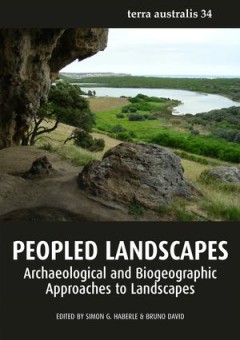
Peopled Landscapes: Archaeological and Biogeographic Approaches to Landscapes
This impressive collection celebrates the work of Peter Kershaw, a key figure in the field of Australian palaeoenvironmental reconstruction. Over almost half a century his research helped reconceptualize ecology in Australia, creating a detailed understanding of environmental change in the Late Pleistocene and Holocene. Within a biogeographic framework one of his exceptional contributions was t…
- Edition
- -
- ISBN/ISSN
- 9781921862724
- Collation
- -
- Series Title
- -
- Call Number
- 930.1 HAB p
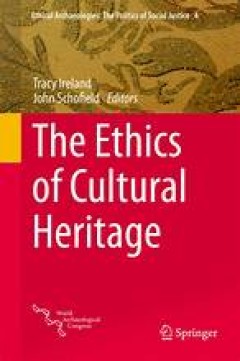
The Ethics of Cultural Heritage
It is widely acknowledged that all archaeological research is embedded within cultural, political and economic contexts, and that all archaeological research falls under the heading ‘heritage’. Most archaeologists now work in museums and other cultural institutions, government agencies, non-government organisations and private sector companies, and this diversity ensures that debates contin…
- Edition
- 1
- ISBN/ISSN
- 978-1-4939-1649-8
- Collation
- XVII, 219, 21 illustrations in colour
- Series Title
- Ethical Archaeologies: The Politics of Social Justice
- Call Number
- -
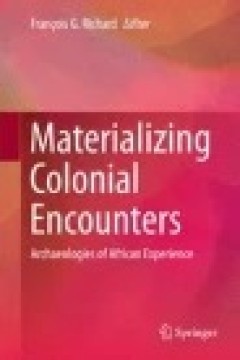
Materializing Colonial Encounters: Archaeologies of African Experience
This volume investigates the material production and expression of colonial experiences in Africa. It combines archaeological, historical, and ethnographic sources to explore the diverse pathways, practices, and projects constructed by Africans in their engagement with the forces of colonial modernity and capitalism. This volume is situated in ongoing debates in archaeological and anthropologic…
- Edition
- -
- ISBN/ISSN
- 978-1-4939-2633-6
- Collation
- -
- Series Title
- -
- Call Number
- -

Imagining Head-Smashed-In Aboriginal Buffalo Hunting on the Northern Plains
At the place known as Head-Smashed-In in southwestern Alberta, Aboriginal people practiced a form of group hunting for nearly 6,000 years before European contact. The large communal bison traps of the Plains were the single greatest food-getting method ever developed in human history. Hunters, working with their knowledge of the land and of buffalo behaviour, drove their quarry over a cliff and…
- Edition
- -
- ISBN/ISSN
- 9781897425046.01
- Collation
- -
- Series Title
- -
- Call Number
- 6.5 x 9.25, 361 pages

Alberta’s Lower Athabasca Basin Archaeology and Palaeoenvironments
Over the past two decades, the oil sands region of northeastern Alberta has been the site of unprecedented levels of development. Alberta’s Lower Athabasca Basin tells a fascinating story of how a catastrophic ice age flood left behind a unique landscape in the Lower Athabasca Basin, one that made deposits of bitumen available for surface mining. Less well known is the discovery that this flo…
- Edition
- -
- ISBN/ISSN
- 9781926836904.01
- Collation
- -
- Series Title
- Recovering the Past: Studies in Archaeology
- Call Number
- 7 x 10, 565 pages
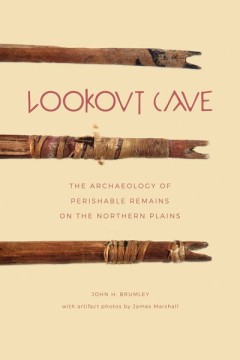
Lookout Cave The Archaeology of Perishable Remains on the Northern Plains
In the mid-1960s as a young high school student John Brumley visited Lookout Cave for the first time and knew immediately that the site was exceptional. The cave, located in north central Montana, was initially discovered in 1920 but it wasn’t until 1969 that a field crew from the University of Montana excavated a large portion of the remote site. The materials recovered in that excavation re…
- Edition
- -
- ISBN/ISSN
- 9781771991803
- Collation
- -
- Series Title
- -
- Call Number
- 280 pages

Light from Ancient Campfires Archaeological Evidence for Native Lifeways on …
Light from Ancient Campfires is the first book in twenty years to gather together a comprehensive prehistoric archaeological record of the Northern Plains First Nations. In this important examination of the region’s earliest inhabitants, author Trevor Peck reviews the many changes of interpretation that have occurred in relevant literature published during the last two decades. Beginning with…
- Edition
- -
- ISBN/ISSN
- 9781897425961.01
- Collation
- -
- Series Title
- -
- Call Number
- 528 pages

Alberta’s Lower Athabasca Basin Archaeology and Palaeoenvironments
Over the past two decades, the oil sands region of northeastern Alberta has been the site of unprecedented levels of development. Alberta’s Lower Athabasca Basin tells a fascinating story of how a catastrophic ice age flood left behind a unique landscape in the Lower Athabasca Basin, one that made deposits of bitumen available for surface mining. Less well known is the discovery that this flo…
- Edition
- -
- ISBN/ISSN
- 9781926836904.01
- Collation
- -
- Series Title
- -
- Call Number
- 7 x 10, 565 pages
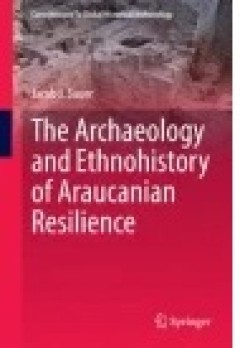
The Archaeology and Ethnohistory of Araucanian Resilience
This volume examines the processes and patterns of Araucanian cultural development and resistance to foreign influences and control through the combined study of historical and ethnographic records complemented by archaeological investigation in south-central Chile. This examination is done through the lens of Resilience Theory, which has the potential to offer an interpretive framework for ana…
- Edition
- -
- ISBN/ISSN
- -
- Collation
- XIII, 193
- Series Title
- Contributions To Global Historical Archaeology
- Call Number
- -
 Computer Science, Information & General Works
Computer Science, Information & General Works  Philosophy & Psychology
Philosophy & Psychology  Religion
Religion  Social Sciences
Social Sciences  Language
Language  Pure Science
Pure Science  Applied Sciences
Applied Sciences  Art & Recreation
Art & Recreation  Literature
Literature  History & Geography
History & Geography